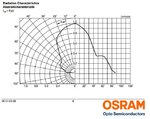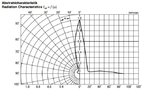Pushpkant
Member level 1

I have an IR LED with 890nm peak wavelength emission (part number is VSMF3710 the datasheet is attached). When I drive the LED with 100mA current the LED is looking red in color. For my application LED must be invisible to human eyes and only visible to the camera sensor, for eye detection.
Thanks in advance
Thanks in advance



